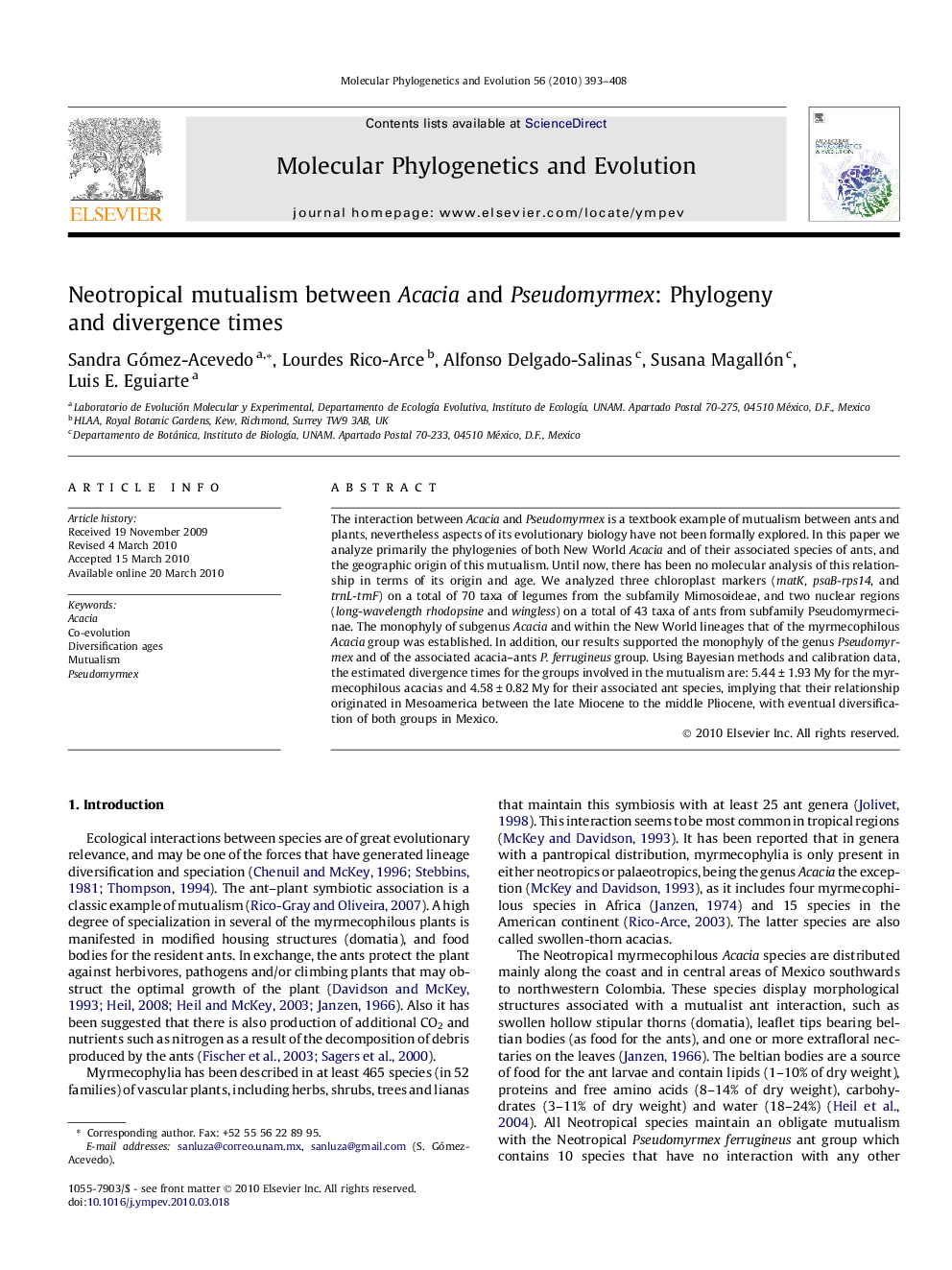| Article ID | Journal | Published Year | Pages | File Type |
|---|---|---|---|---|
| 2834455 | Molecular Phylogenetics and Evolution | 2010 | 16 Pages |
The interaction between Acacia and Pseudomyrmex is a textbook example of mutualism between ants and plants, nevertheless aspects of its evolutionary biology have not been formally explored. In this paper we analyze primarily the phylogenies of both New World Acacia and of their associated species of ants, and the geographic origin of this mutualism. Until now, there has been no molecular analysis of this relationship in terms of its origin and age. We analyzed three chloroplast markers (matK, psaB-rps14, and trnL-trnF) on a total of 70 taxa of legumes from the subfamily Mimosoideae, and two nuclear regions (long-wavelength rhodopsine and wingless) on a total of 43 taxa of ants from subfamily Pseudomyrmecinae. The monophyly of subgenus Acacia and within the New World lineages that of the myrmecophilous Acacia group was established. In addition, our results supported the monophyly of the genus Pseudomyrmex and of the associated acacia–ants P. ferrugineus group. Using Bayesian methods and calibration data, the estimated divergence times for the groups involved in the mutualism are: 5.44 ± 1.93 My for the myrmecophilous acacias and 4.58 ± 0.82 My for their associated ant species, implying that their relationship originated in Mesoamerica between the late Miocene to the middle Pliocene, with eventual diversification of both groups in Mexico.
